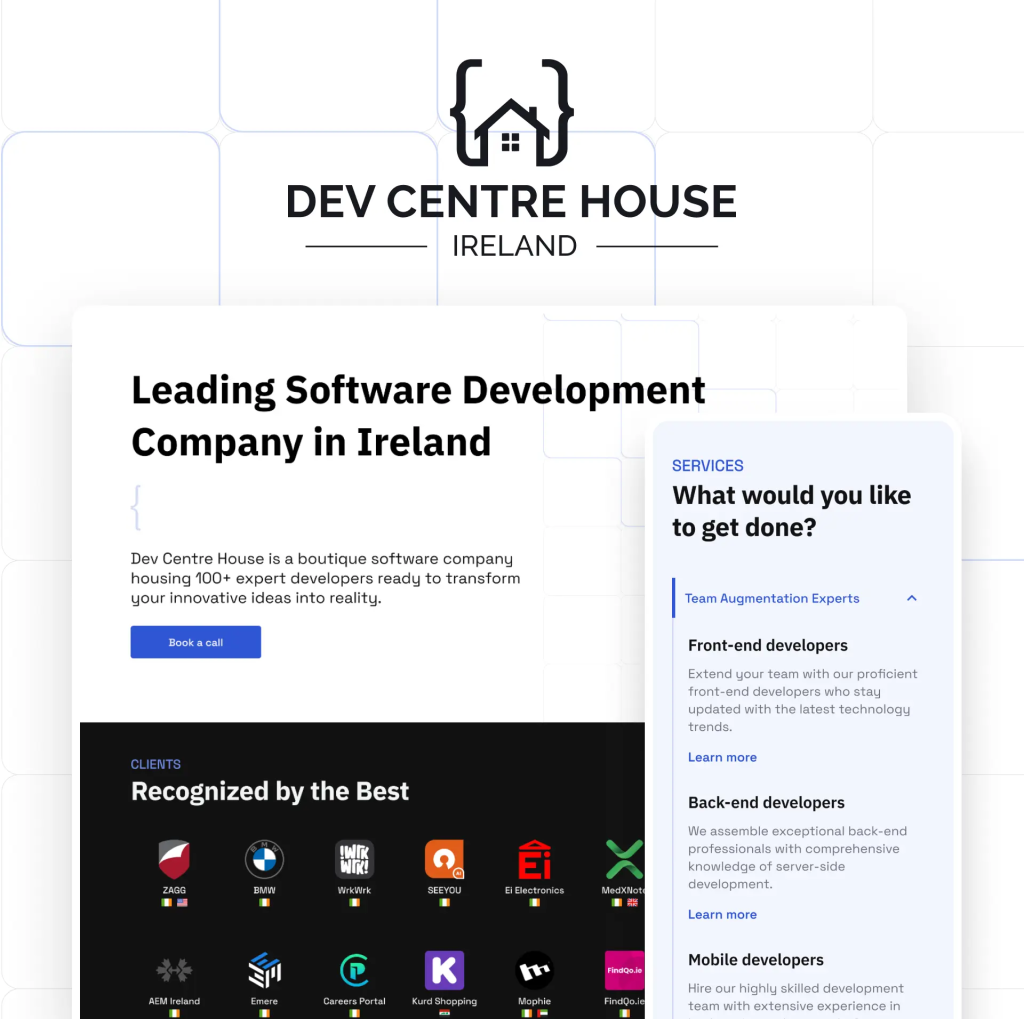Are rising IT costs eating into your budget? Learn what’s driving up your IT expenses and how to reduce tech spending with effective IT cost optimisation strategies. Get valuable insights on IT expense management and cutting IT costs.
Introduction: Understanding Why IT Costs Are Rising (And How to Address Them)
IT costs are a significant part of any business’s budget, but recent trends have made it increasingly difficult to keep these expenses under control. With the growing complexity of technology, evolving infrastructure needs, and the increasing reliance on digital solutions, reducing IT expenses is becoming more challenging than ever.
If you’re noticing your IT costs are creeping up, you’re not alone. In this blog post, we’ll explore the key factors that are driving up IT expenses and provide actionable steps to help you cut IT costs without sacrificing quality or performance. Whether you’re looking for IT budgeting tips or ways to streamline your processes, we’ve got you covered.
1. Understanding the Rise in IT Costs: Why IT Costs Are Rising
One of the first steps in managing IT costs is understanding why they’re increasing. Several factors contribute to the upward trajectory of IT spending, and recognising these drivers can help you pinpoint areas for improvement.
Tech spending challenges often arise from:
- Expanding IT infrastructure: As businesses scale, the need for more servers, cloud services, and security measures increases, which can push IT infrastructure costs higher.
- Complex software solutions: Many companies invest in sophisticated software solutions to meet their evolving needs. While these tools can improve operations, they often come with higher licensing, maintenance, and support costs.
- Cybersecurity threats: With the increasing frequency and sophistication of cyberattacks, companies must invest more in security to protect sensitive data and comply with regulations, driving up IT overheads.
- Employee training and skill development: As technology evolves, so does the need for constant training. This can add an ongoing expense to your IT budget management efforts.
By understanding these factors, you can make more informed decisions about where to focus your IT cost optimisation strategies.
2. How to Lower IT Costs: Focusing on Efficiency and Automation
If you’re looking to tackle rising IT costs, one of the most effective strategies is improving IT efficiency. Streamlining your processes and automating routine tasks can significantly reduce both direct and indirect IT expenses.
IT Efficiency Improvements:
- Cloud migration: Moving certain operations to the cloud can offer scalability, flexibility, and cost savings. With the right cloud infrastructure, you can reduce physical hardware and maintenance costs.
- Automation tools: Automating repetitive tasks such as system monitoring, data backups, and software updates can free up IT resources and reduce labour costs.
- Virtualisation: Instead of investing in more physical servers, consider virtualisation to optimise the use of existing hardware, allowing multiple applications to run on a single machine.
By automating and optimising where possible, you’ll be able to reduce your tech spending and direct resources where they’re most needed.
3. Managing IT Costs: Strategies for Controlling IT Expenses
Effective cost control in IT is all about knowing where to invest and where to cut back. Having a robust IT budget management plan can help ensure that your resources are being allocated efficiently. The key is to monitor IT expenses closely and make adjustments as necessary.
IT Budgeting Tips for Success:
- Review your software licences: Regularly review your software subscriptions and licences. You may find that you’re paying for tools or features you don’t use, which can be a source of unnecessary expenses.
- Negotiate vendor contracts: Whether it’s cloud services, software, or hardware, negotiating with vendors can help you secure better rates or terms that reduce your overall costs.
- Consolidate suppliers: Rather than working with multiple vendors for similar services, consider consolidating suppliers to take advantage of bulk discounts or better pricing structures.
- Track energy consumption: Data centres and IT infrastructure can consume a lot of energy. Monitoring energy use and investing in energy-efficient equipment can reduce IT infrastructure costs over time.
By putting a strategic plan in place for managing IT costs, you’ll have more control over your financial resources and can avoid over-spending.
4. Minimising IT Expenses: Cutting IT Costs Without Sacrificing Quality
One of the biggest concerns when reducing IT expenses is the fear of sacrificing quality. It’s essential to find a balance between cost-cutting and maintaining a high standard of service, security, and functionality.
How to Cut IT Costs Without Sacrificing Quality:
- Outsource IT functions: Consider outsourcing certain IT tasks, such as helpdesk support or system maintenance, to specialised service providers. This can reduce payroll costs while still ensuring expert handling of your IT needs.
- Adopt open-source software: Open-source tools can offer similar functionality to expensive proprietary software at a fraction of the cost.
- Optimise hardware usage: Make sure that all IT equipment is being used to its full potential. Replacing outdated hardware can be expensive, so look for ways to extend the life of your current equipment by upgrading components rather than replacing entire systems.
By focusing on these strategies, you can achieve IT cost optimisation while still providing your business with the tools and resources needed to stay competitive.
5. Avoiding IT Overhead: Preventing Unnecessary Expenses
Unnecessary IT overheads can slowly eat into your budget without you even realising it. Identifying and eliminating these hidden costs is crucial to reducing IT overheads.
Steps to Avoid IT Overhead:
- Reduce redundant systems: Sometimes, businesses continue using outdated systems simply because it’s too time-consuming to transition. Evaluate if older systems are still necessary, or if newer, more efficient alternatives are available.
- Optimise software renewals: Avoid auto-renewing contracts or software licences without reviewing whether they’re still needed. Some tools might not be delivering the value you expect.
- Consolidate your data: Storing data across multiple platforms can lead to unnecessary costs. Consolidating your data into fewer platforms or optimising your data storage solutions can lower your overall expenditure.
Taking proactive steps to minimise IT expenses will help you stay on top of your budget and avoid unforeseen costs.
6. IT Cost Analysis: Regularly Assessing Your IT Spend
Regularly conducting an IT cost analysis is an essential part of managing IT costs effectively. By reviewing your IT spending on a periodic basis, you can identify areas for improvement and adjust your strategy accordingly.
The Importance of IT Cost Analysis:
- Monitor trends: Keep track of how your IT costs evolve over time. If costs are rising, you’ll be able to spot trends and take action before they spiral out of control.
- Measure ROI: Regularly assess the return on investment (ROI) of your IT projects and solutions. If certain investments aren’t yielding the expected results, it might be time to reconsider or replace them.
- Benchmark against industry standards: Comparing your IT expenses to industry benchmarks can provide insight into whether you’re overspending in certain areas.
With a detailed IT cost analysis, you can make data-driven decisions that will lead to more efficient IT expense management.
Conclusion: Taking Control of Your IT Spending
In today’s fast-paced tech environment, reducing tech spending while maintaining efficient operations is crucial for long-term success. By understanding the drivers of rising IT costs, optimising processes, and taking control of your IT budget management, you can achieve IT cost optimisation and keep your business running smoothly.
If you’re ready to optimise your IT budget and cut IT costs, Dev Centre House is here to help. Our team of experts can guide you through effective tech budget management strategies tailored to your needs.
Learn more about our IT Services and Cost Optimisation Strategies and start improving your IT efficiency today!

Frequently Asked Questions
Why are my IT costs rising?
IT costs are rising due to several factors, including expanding IT infrastructure needs, complex software solutions with high licensing and maintenance fees, increasing cybersecurity threats, and ongoing employee training requirements. Understanding these drivers can help you identify areas for cost optimization.
How can I reduce my IT expenses without compromising quality?
You can reduce IT expenses by focusing on efficiency and automation. Streamlining processes and automating routine tasks can significantly cut costs. Consider cloud migration and automation tools to improve scalability and flexibility while reducing physical hardware and maintenance expenses.
What role does IT infrastructure play in increasing costs?
As businesses grow, more servers, cloud services, and security measures are needed, driving up IT infrastructure costs. Investing in scalable solutions like cloud services can help manage these expenses effectively.
How does cybersecurity impact IT budgets?
The growing frequency of cyberattacks necessitates higher investments in security measures to protect data and comply with regulations. These increased security needs contribute to rising IT costs, making it essential to implement robust cybersecurity strategies efficiently.
Is investing in employee training affecting my IT budget?
Yes, as technology evolves, continuous employee training becomes necessary to keep up with new tools and practices. While this is an ongoing expense, it ensures your team remains skilled and efficient, ultimately benefiting your overall IT strategy.
What is the benefit of cloud migration for cost reduction?
Cloud migration offers scalability and flexibility, which can lead to significant cost savings. By moving operations to the cloud, you reduce the need for physical hardware and its associated maintenance costs, allowing for more efficient resource allocation.
Which tasks should I consider automating to lower IT expenses?
Consider automating repetitive tasks such as system monitoring, data backups, and software updates. This not only frees up valuable IT resources but also reduces the likelihood of human error, leading to cost savings over time.
Can complex software solutions drive up my IT costs?
While sophisticated software solutions can enhance operations, they often come with higher licensing, maintenance, and support costs. It’s crucial to evaluate whether these tools align with your business goals and explore alternatives that offer similar benefits at a lower cost.
What are some effective strategies for optimizing my IT budget?
To optimize your IT budget, focus on identifying inefficiencies and areas where automation or cloud solutions can be implemented. Regularly reviewing your software licenses and contracts can also uncover opportunities for savings without sacrificing performance.
